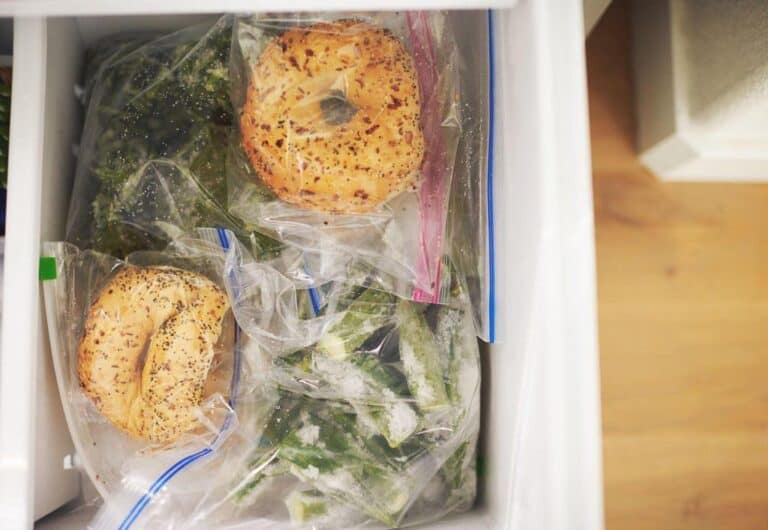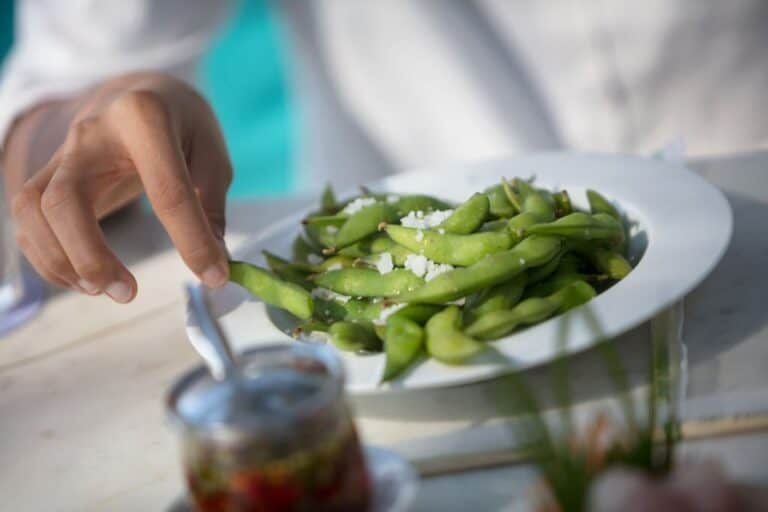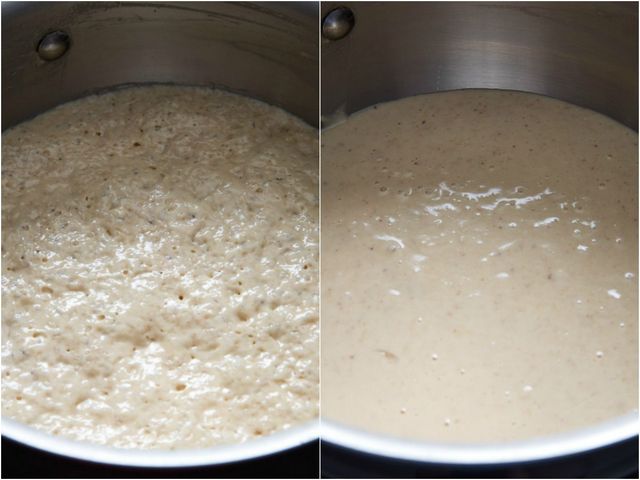Who Eats Spam and Why Are So Many People Still Eating Spam?

In a world where culinary trends seem to change as swiftly as the seasons, there exists a peculiar blue-and-yellow can that defies the odds, standing the test of time – Spam.
This unassuming canned meat product, initially introduced during the Great Depression, has continued to find its way into the hearts and plates of a remarkably diverse group of individuals. Who eats Spam, and why does it maintain its popularity in an era of ever-evolving food preferences?
Beyond its humble origins, Spam has become a symbol of resilience, adaptation, and perhaps even a touch of nostalgia for many. From its historical role in military rations to its transformation into a Hawaiian delicacy, Spam’s journey is a captivating tale of cultural fusion and creativity. But that’s not all. Spam’s appeal stretches even further, with campers, comfort food enthusiasts, and inventive home cooks alike. It helps finding new ways to savor this timeless classic.
Join us on a flavorful exploration as we uncover the intriguing world of Spam – who embraces it, why they do, and the countless culinary adventures it continues to inspire.
The History and Popularity of Spam
Spam, the canned meat product made from pork shoulder and ham, has a long and intriguing history that dates back to its inception in 1937. During World War II, Spam became popular due to its long shelf life and easy accessibility for soldiers on the front lines.
It was included in military rations and quickly gained a reputation as the meat that won the war. After the war ended, Spam continued to be a staple in many households, especially among low-income families.
Interestingly enough, despite its humble origins as a wartime food, Spam’s popularity has endured over the years. It has become ingrained in certain cultures as an iconic ingredient with unique culinary applications. In places like Hawaii and South Korea, where it was introduced by American servicemen during their time stationed there, Spam is now considered both comfort food and a beloved cultural phenomenon. Its versatility lends itself well to fusion dishes such as spam musubi (a Hawaiian snack) or budae-jjigae (a Korean stew).
Part of what makes Spam so enduringly popular is its affordability and convenience. In tough times, people turn to cheap, tasty food that will not break the bank. This aspect explains why it continues to hold appeal today – it remains affordable while providing a versatile foundation for countless recipes.
Spam may be seen as a relic of nostalgic cuisine or wartime survival tactics, but others love its unique taste. The distinct combination of saltiness and savory flavoring continues
What’s in a Can of Spam?

Here’s a quick breakdown of what you’ll find in a can of Spam:
| Ingredient | Description |
| Pork | The main meat ingredient in Spam. |
| Ham | Adds a savory, smoky flavor to the mix. |
| Salt | For preservation and flavor. |
| Water | Maintains the meat’s moisture. |
| Sugar | A touch of sweetness to balance the salt. |
| Sodium Nitrite | A common preservative in processed meats. |
Spam’s enduring popularity can be attributed to its long shelf life, affordability, and versatility. While it may not be the epitome of gourmet dining, it has found a place in countless recipes and culinary creations.
Read: Is There Pork Free Spam?
The Nutritional Perspective
While Spam has its fans and a place in various cuisines, it’s essential to consider its nutritional profile. Understanding what you’re consuming can help you make informed choices about how to incorporate Spam into your diet.
Sodium Content: One of the standout characteristics of Spam is its high sodium content. A single 2-ounce serving of Spam contains approximately 790 milligrams of sodium. This can contribute significantly to your daily sodium intake, and excessive sodium consumption has been linked to health concerns such as high blood pressure. Thus, sodium intake must be monitored, especially if you have dietary restrictions or health issues that limit salt.
Saturated Fat: Spam also contains a notable amount of saturated fat, with approximately 16 grams in a 2-ounce serving. When consumed in excess, saturated fats raise LDL cholesterol and harm the heart. It is best to balance your diet with unsaturated fats from nuts, seeds, and oily fish.
Spam can be eaten occasionally, but if you are watching your sodium and saturated fat intake, it is best to limit it. Making thoughtful choices about portion sizes and pairing Spam with good condiments and healthier sides can help you savor its unique flavor without compromising your nutritional goals.
The Fans of Spam
So, who eats Spam? The answer might surprise you. A diverse group of people, spanning different ages, cultures, and backgrounds, have found a liking for Spam. Let’s break it down:
1. Military History
Spam has a strong historical connection with the military. It played a significant role in feeding soldiers during World War II and the Korean War. GIs often received rations of Spam, and it became a symbol of sustenance during challenging times. This history has left an enduring affinity for Spam within the military community.
2. Hawaiian Love Affair
In Hawaii, Spam is nothing short of a beloved delicacy. The state consumes more Spam per capita than any other in the United States. It’s often served with rice and seaweed, wrapped in a snack known as “Spam musubi.” Hawaii’s unique love for Spam can be traced back to its introduction during the war and its affordable nature.
3. Cultural Fusion
Spam’s popularity extends to other parts of the world as well. In South Korea, budae jjigae, or “army stew,” includes slices of Spam alongside various ingredients. This dish is a testament to the fusion of American military rations with Korean cuisine. Similarly, the Philippines has embraced Spam in various recipes, including Spamsilog, a breakfast dish with Spam, eggs, and garlic rice.
4. Camping and Outdoor Enthusiasts
Spam’s durability and simplicity make it a favorite among campers and outdoor enthusiasts. It doesn’t require refrigeration, making it a reliable choice for extended trips into the wilderness. Whether it’s fried on a campfire or incorporated into a sandwich, Spam offers sustenance and convenience.
5. Comfort Food Lovers
For some, Spam represents a taste of nostalgia and comfort. It’s a reminder of simpler times and meals shared with family. The familiarity of the taste, combined with its affordability, keeps it a part of many households.
The Culinary Allure of Spam
Spam, once a modest canned meat, has now transcended its humble origins to become a key player in a variety of delectable recipes. Its adaptability in the culinary world is evident in its incorporation into diverse dishes. For instance, the tantalizing blend of Spam and pineapple on skewers offers a sweet and savory contrast that delights the taste buds.
Similarly, the savory allure of Spam fried rice, with its harmonious medley of flavors and textures, has become a go-to comfort food for many. Even in the world of sushi, Spam has found its place, adding a unique twist to traditional rolls and showcasing its ability to seamlessly fuse with other ingredients.
Spam and Pineapple Skewers Recipe
Here’s a simple yet delicious recipe to try:
Ingredients:
- 1 can of Spam, cubed
- Fresh pineapple chunks
- Bell peppers, red and green
- Wooden skewers
Instructions:
- Alternately thread Spam cubes, pineapple chunks, and bell pepper pieces onto the wooden skewers.
- Grill the skewers over medium heat until the Spam and pineapple are slightly caramelized.
- Serve with your favorite dipping sauce.
Spam Fried Rice
A classic and comforting dish:
Ingredients:
- 1 can of Spam, diced
- Cooked rice
- Vegetables (peas, carrots, and corn)
- Soy sauce
- Scrambled eggs
Instructions:
- Sauté the Spam until lightly browned.
- Add the vegetables and rice.
- Drizzle with soy sauce and stir in the scrambled eggs.
- Cook until heated through, and enjoy!
Conclusion
In conclusion, Spam’s enduring popularity is a testament to its adaptability, affordability, and the nostalgia it invokes. Spam has appealed to a wide audience from its wartime roots to global culinary fusion. So, who eats Spam? People from all walks of life. Whether it’s a trip down memory lane or a culinary adventure, Spam remains a unique and cherished part of many diets.
Next time you encounter that familiar blue-and-yellow can on the store shelf, you might just find yourself joining the ranks of those who’ve embraced the flavorful world of Spam. Give it a try, and you might discover your own creative way to enjoy this enduring classic.
FAQs on Spam and Processed Meat Consumption
Is Spam healthy to eat?
While it is convenient, Spam is not considered a healthy food. If consumed in large amounts, its sodium, fat, and preservatives can cause high blood pressure and heart disease. Moderation is key.
What are some popular recipes using Spam?
Popular Spam recipes include Spam musubi, Spam fried rice, and Spam and eggs. These dishes are especially popular in Hawaii and other parts of the Pacific, where Spam has integrated into local cuisines.
How did Spam gain its popularity?
Spam gained popularity during World War II when it was a readily available source of protein. Its long shelf life and convenience made it popular after the war, especially in areas with scarce or expensive fresh meat.
Where is Spam most popular?
Spam is most popular in Hawaii, where it has become a staple in local cuisine. It also enjoys significant popularity in South Korea, Japan, the Philippines, and Guam, among other places with a history of American military presence.
What is the shelf life of Spam?
The shelf life of Spam can vary depending on the specific product and storage conditions. Generally, it can be safely consumed for up to 2-5 years if stored in a cool, dry place. Always check the expiration date on the can for the most accurate information.
What are the main ingredients in Spam?
The main ingredients in Spam typically include chopped pork shoulder meat, ham meat, salt, water, modified potato starch, sugar, and sodium nitrite. These ingredients contribute to its distinctive taste and texture.
What are the different flavors or variations of Spam available?
Some popular variations of Spam include Spam with bacon, Spam with cheese, and low-sodium Spam. Other variations may be available in specific regions, catering to local tastes and preferences.
What cultural significance does Spam hold in Hawaii?
In Hawaii, Spam has become a cultural icon, with its incorporation into various local dishes, such as Spam musubi and Spam fried rice. It symbolizes the influence of World War II on Hawaiian cuisine and the intersection of different cultures in the region.
What is the global market share of Spam compared to other processed meats?
As of recent data, Spam holds a significant global market share in the processed meat industry, competing with other popular canned and preserved meat products. Its market share varies by region, with particularly strong sales in the Asia-Pacific region and parts of North America.






